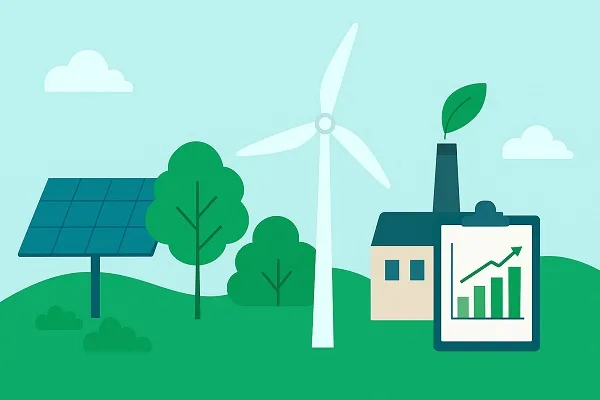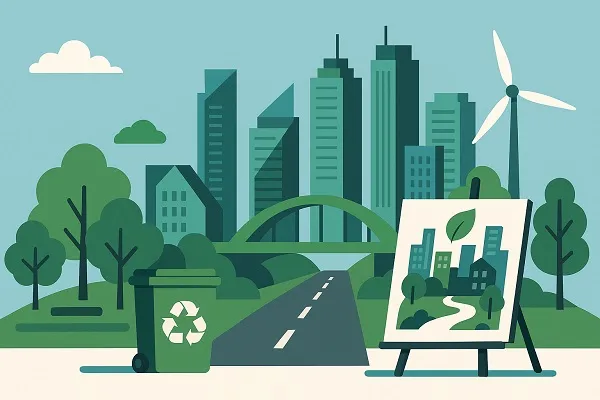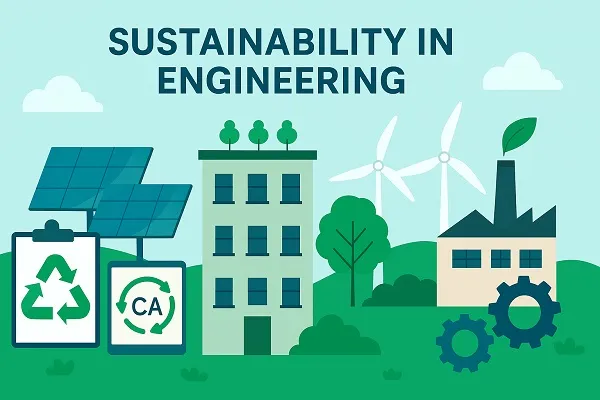Sustainability in engineering is no longer a niche concept, it has become a cornerstone of modern design, planning, and innovation. As the global demand for eco-conscious infrastructure and technology grows, the engineering community is rethinking traditional approaches to materials, energy use, and life-cycle analysis. From carbon-neutral construction to circular manufacturing systems, sustainable engineering practices are transforming how we build and operate in harmony with the environment.
The road ahead is both challenging and promising. Engineers are expected to balance performance, cost, and environmental impact while meeting global development goals. So, where exactly are we headed?
Defining Sustainability in Engineering
Sustainability in engineering refers to designing and implementing solutions that meet societal needs without compromising the ability of future generations to meet theirs. It incorporates environmental protection, social responsibility, and economic viability.
Key principles include:
- Minimizing waste and emissions
- Maximizing resource efficiency
- Using renewable or low-impact materials
- Designing for longevity and adaptability
This shift is impacting every discipline—from civil and mechanical to chemical and software engineering.
Green Design and Life Cycle Thinking
Life cycle assessment (LCA) is a foundational concept in sustainable engineering. Engineers are now evaluating the environmental impact of a product or structure from cradle to grave, from raw material extraction to disposal or recycling.
Considerations in Life Cycle Engineering:
- Material sourcing: Are raw materials renewable or recycled?
- Manufacturing processes: How much energy or water is consumed?
- Product longevity: Can it be reused, upgraded, or easily repaired?
- End-of-life options: Is it biodegradable, recyclable, or landfilled?
Green design goes beyond compliance; it’s about innovation that benefits both the user and the planet.
Sustainable Materials and Innovations
Material selection plays a huge role in environmental impact. Engineers are increasingly turning to sustainable materials that reduce carbon footprints without compromising performance.
Emerging sustainable materials:
- Cross-laminated timber (CLT): A renewable alternative to steel and concrete in construction.
- Recycled plastics and composites: Used in infrastructure, automotive parts, and consumer products.
- Bioplastics: Derived from plants and biodegradable.
- Geopolymers: Low-carbon cement alternatives for concrete.
These innovations not only reduce emissions but also support circular economy principles by promoting reuse and recyclability.
Renewable Energy Integration in Engineering Projects

As energy systems shift toward renewables, engineering plays a pivotal role in integrating solar, wind, hydro, and other sources into new and existing infrastructure.
Engineering challenges and solutions include:
- Grid integration: Smart grid systems for balancing demand and supply.
- Storage solutions: Batteries, pumped hydro, and thermal storage systems.
- Efficiency improvements: Designing systems that use energy with minimal loss.
- Hybrid systems: Combining renewable sources with backup for reliability.
From urban planning to product development, energy-efficient design is no longer optional—it’s essential.
Circular Economy and Engineering Design
A major trend reshaping sustainability in engineering is the shift from linear to circular models. Instead of the traditional “take-make-dispose” approach, engineers are now designing for reusability and regeneration.
Circular engineering strategies:
- Modular design: Makes components easier to replace or upgrade.
- Closed-loop systems: Where outputs of one process become inputs for another.
- Design for disassembly: Simplifies repair and end-of-life recovery.
- Digital twins and data tracking: Help monitor wear and optimize reuse cycles.
This transition requires not just technical change, but also rethinking business models and consumer engagement.
The Role of Digital Technologies in Sustainable Engineering
Digital transformation is accelerating sustainable practices through tools like AI, IoT, and simulation software. These technologies enable smarter decision-making and efficient resource use.
Examples include:
- Building Information Modeling (BIM): Reduces construction waste and improves design precision.
- Predictive maintenance systems: Prevent breakdowns and reduce resource usage.
- Digital twins: Allow engineers to simulate, optimize, and monitor real-time systems.
- IoT in water and energy management: Helps identify leaks, energy waste, and inefficiencies.
Smart technologies offer real-time data and control, which are key to sustainable system management.
Sustainable Urban and Infrastructure Development

Urbanization is one of the most pressing global trends, and sustainable engineering is central to building cities that are livable, efficient, and environmentally responsible.
Key focuses in sustainable urban engineering:
- Green buildings: LEED or BREEAM-certified structures that use fewer resources.
- Public transportation systems: Electric buses, bike lanes, and rail.
- Stormwater management: Green roofs and permeable pavements to reduce runoff.
- Resilient infrastructure: Designed to withstand climate-related stressors like flooding or heatwaves.
Engineers now collaborate closely with urban planners, ecologists, and policymakers to ensure city systems function sustainably and equitably.
Education, Policy, and the Engineer’s Evolving Role
Sustainability is changing how engineers are educated and how they operate in professional environments. Universities are embedding environmental ethics and systems thinking into their curricula. Likewise, codes of practice are being updated to reflect sustainability obligations.
Influential developments:
- Sustainability certifications: Engineers can now pursue credentials like Envision or CEnv.
- Regulatory changes: Governments are introducing stricter emissions and building standards.
- Cross-disciplinary collaboration: Engineers increasingly work with sociologists, economists, and environmental scientists.
- Public accountability: There’s growing pressure on engineers to ensure their designs are ethically and environmentally sound.
The modern engineer is as much a strategist and communicator as a technical expert.
Barriers to Adoption and Ongoing Challenges
Despite growing momentum, there are still barriers that hinder the full integration of sustainable engineering practices.
Major obstacles:
- Cost constraints: Upfront costs of sustainable materials or technologies may be higher.
- Lack of awareness or training: Not all stakeholders are familiar with sustainable principles.
- Resistance to change: Legacy systems and traditional methods can be hard to replace.
- Inconsistent standards: Different regions have different sustainability regulations.
Overcoming these challenges requires not just innovation but systemic change across supply chains, industries, and education systems.
Sustainability in engineering is not a destination, it’s a continuous process of learning, adapting, and improving. Engineers are uniquely positioned to solve some of the planet’s most urgent problems, but the solutions demand a shift in mindset, method, and mission. As technology evolves and the stakes rise, the engineering profession must remain committed to sustainable progress, where responsibility, resilience, and regeneration guide every design decision.
Content reviewed and published by Tier2Tek Staffing Editorial Team .

